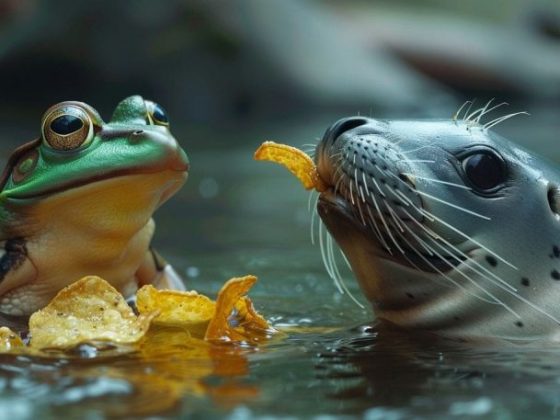 The pest you’re likely referring to is the German Cockroach, arguably one of the world’s most successful indoor pests due to its adaptability, resilience, and reproductive capabilities.
The German Cockroach, or Blattella germanica, is native to Northeast Africa but has successfully invaded every continent, except Antarctica, thanks to human intervention. One single female German Cockroach can produce an average of 180 to 320 offspring in her brief lifetime of 100 to 200 days. This rapid reproductive capability ensures heavy infestation in a short period of time.
Humans have been instrumental in helping this pest spread across the globe. The German Cockroach has evolved to survive in close association with humans – they specifically thrive in the indoor environment of human residences. They hitch rides in boxes, bags, and even clothing, allowing them to spread from place to place easily.
Their success also lies in their adaptability. German Cockroaches can survive on a diverse diet, including regular food scraps, soap, glue, and even toothpaste. They also evolve resistance to a variety of pesticides quickly, making them incredibly difficult to exterminate.
German Cockroaches are notably a major problem as they can spread various diseases, cause allergies, and trigger asthma attacks, especially in sensitive individuals. Despite the advances in pest control, the German Cockroach remains a persistent pest in human habitations.
However, by maintaining cleanliness and adopting integrated pest management practices, their population can be controlled and infestations avoided.
The pest you’re likely referring to is the German Cockroach, arguably one of the world’s most successful indoor pests due to its adaptability, resilience, and reproductive capabilities.
The German Cockroach, or Blattella germanica, is native to Northeast Africa but has successfully invaded every continent, except Antarctica, thanks to human intervention. One single female German Cockroach can produce an average of 180 to 320 offspring in her brief lifetime of 100 to 200 days. This rapid reproductive capability ensures heavy infestation in a short period of time.
Humans have been instrumental in helping this pest spread across the globe. The German Cockroach has evolved to survive in close association with humans – they specifically thrive in the indoor environment of human residences. They hitch rides in boxes, bags, and even clothing, allowing them to spread from place to place easily.
Their success also lies in their adaptability. German Cockroaches can survive on a diverse diet, including regular food scraps, soap, glue, and even toothpaste. They also evolve resistance to a variety of pesticides quickly, making them incredibly difficult to exterminate.
German Cockroaches are notably a major problem as they can spread various diseases, cause allergies, and trigger asthma attacks, especially in sensitive individuals. Despite the advances in pest control, the German Cockroach remains a persistent pest in human habitations.
However, by maintaining cleanliness and adopting integrated pest management practices, their population can be controlled and infestations avoided.
How one of the world’s most successful indoor pests took over the planet

 The pest you’re likely referring to is the German Cockroach, arguably one of the world’s most successful indoor pests due to its adaptability, resilience, and reproductive capabilities.
The German Cockroach, or Blattella germanica, is native to Northeast Africa but has successfully invaded every continent, except Antarctica, thanks to human intervention. One single female German Cockroach can produce an average of 180 to 320 offspring in her brief lifetime of 100 to 200 days. This rapid reproductive capability ensures heavy infestation in a short period of time.
Humans have been instrumental in helping this pest spread across the globe. The German Cockroach has evolved to survive in close association with humans – they specifically thrive in the indoor environment of human residences. They hitch rides in boxes, bags, and even clothing, allowing them to spread from place to place easily.
Their success also lies in their adaptability. German Cockroaches can survive on a diverse diet, including regular food scraps, soap, glue, and even toothpaste. They also evolve resistance to a variety of pesticides quickly, making them incredibly difficult to exterminate.
German Cockroaches are notably a major problem as they can spread various diseases, cause allergies, and trigger asthma attacks, especially in sensitive individuals. Despite the advances in pest control, the German Cockroach remains a persistent pest in human habitations.
However, by maintaining cleanliness and adopting integrated pest management practices, their population can be controlled and infestations avoided.
The pest you’re likely referring to is the German Cockroach, arguably one of the world’s most successful indoor pests due to its adaptability, resilience, and reproductive capabilities.
The German Cockroach, or Blattella germanica, is native to Northeast Africa but has successfully invaded every continent, except Antarctica, thanks to human intervention. One single female German Cockroach can produce an average of 180 to 320 offspring in her brief lifetime of 100 to 200 days. This rapid reproductive capability ensures heavy infestation in a short period of time.
Humans have been instrumental in helping this pest spread across the globe. The German Cockroach has evolved to survive in close association with humans – they specifically thrive in the indoor environment of human residences. They hitch rides in boxes, bags, and even clothing, allowing them to spread from place to place easily.
Their success also lies in their adaptability. German Cockroaches can survive on a diverse diet, including regular food scraps, soap, glue, and even toothpaste. They also evolve resistance to a variety of pesticides quickly, making them incredibly difficult to exterminate.
German Cockroaches are notably a major problem as they can spread various diseases, cause allergies, and trigger asthma attacks, especially in sensitive individuals. Despite the advances in pest control, the German Cockroach remains a persistent pest in human habitations.
However, by maintaining cleanliness and adopting integrated pest management practices, their population can be controlled and infestations avoided.

